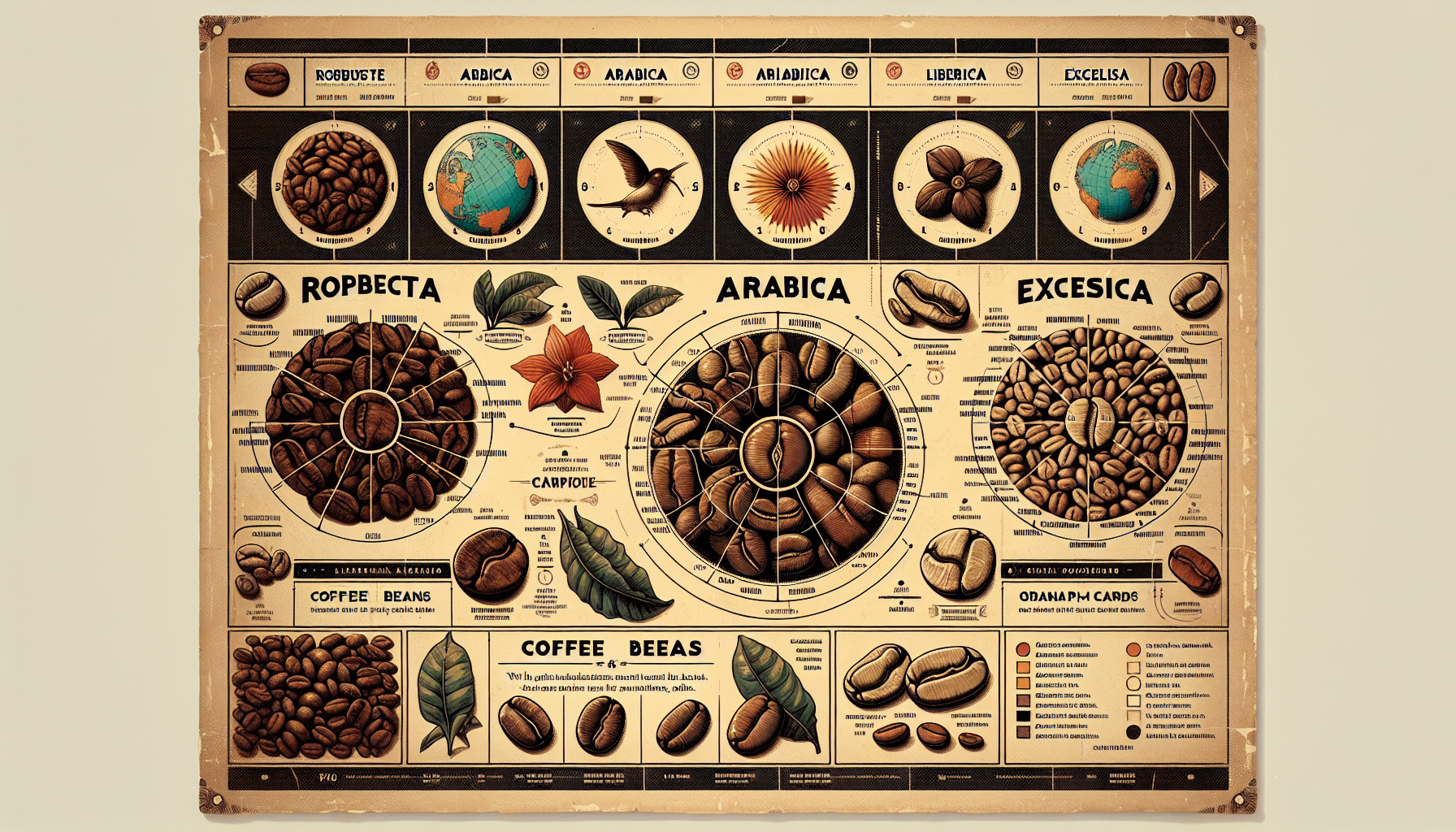Understanding Coffee Bean Basics
Coffee is more than just a beverage; for many, it's a daily ritual, a source of comfort, and a complex world to explore. At the heart of every cup of coffee are the beans, which are actually seeds from the coffee plant's fruit. There are two primary types of coffee beans that dominate the market: Arabica and Robusta. Arabica beans are known for their sweeter, softer taste and higher acidity, while Robusta beans generally provide a stronger, bolder flavor, and contain more caffeine. Beyond these two, there are other varieties such as Liberica and Excelsa, which contribute their own unique profiles.
Regions and Their Flavors
Central and South America
Coffees from regions like Colombia, Brazil, and Costa Rica often exhibit nutty, chocolatey notes with hints of fruit and spice. These beans are typically well balanced with a good mixture of smooth sweetness and some acidity.
Africa
African coffee, especially from Ethiopia and Kenya, can be incredibly diverse but often has flavors of berry, wine, and citrus. They are known for their floral aromatics and bright acidity, offering a more exotic and complex cup.
Asia and the Pacific
In countries like Indonesia and Papua New Guinea, coffee beans commonly have earthier, spicier profiles. They often have a fuller body and a reduced acidity, producing a rich and robust cup that stands out for its smoothness and sometimes smoky overtones.
The Importance of Processing
Once the coffee berries have been harvested, they must be processed to remove the outer fruit and expose the beans within. The method of processing affects the flavor of the coffee bean enormously. There are three main processing methods:
Washed (Wet Processed)
In this method, the fruit is removed from the beans before they are dried, often resulting in a cleaner and brighter flavor with more pronounced acidity.
Natural (Dry Processed)
The beans are dried with the fruit still attached, often producing a sweeter and fruitier coffee. This method can also introduce more variability and wildness into the coffee's profile.
Honey (Pulped Natural)
This less common method removes the skin but leaves some of the fruit's mucilage (honey) still on the bean during the drying phase, often resulting in a body that's heavier than washed coffees but lighter than natural processed ones.
Roasting's Role
Roasting transforms green coffee into the aromatic brown beans that we purchase. The roast level can significantly affect the taste, aroma, and color of the coffee. Roast levels range from light to dark:
Light Roasts
These roasts preserve many of the unique flavors of the bean and its origin. They tend to have higher acidity and are more suitable for subtle, complex coffees.
Medium Roasts
A good balance of acidity and body, with the beans starting to exhibit more of the roaster's influence in flavors like caramel and nuts.
Dark Roasts
At this level, the coffee is characterized by bolder, richer flavors with decreased acidity. Dark roasts can often have a smoky or even burnt taste and are less about the origin flavors.
Storing Your Beans
To preserve the freshness and flavor of your coffee beans, proper storage is essential. Keep beans in an airtight container away from light, heat, and moisture. It’s best to store them whole and grind them just before brewing to maintain their full flavor profile.
Finding Your Perfect Bean
Finding the perfect coffee bean is a personal journey. It's crucial to consider the origin, processing method, roast level, and even the particular farm or estate where the coffee was grown. Exploring different beans through tastings or cupping can help you learn what suits your palate. Paying attention to the body, acidity, sweetness, bitterness, and aroma will guide you to your ultimate coffee bean choice.
In conclusion, the world of coffee beans is vast and varied. By understanding the basics and nuances of different beans, their origins, and the influence of processing and roasting, you can deepen your appreciation of coffee and curate an exceptional coffee experience tailored to your tastes.
Try Healthy Bean Coffee Today!
